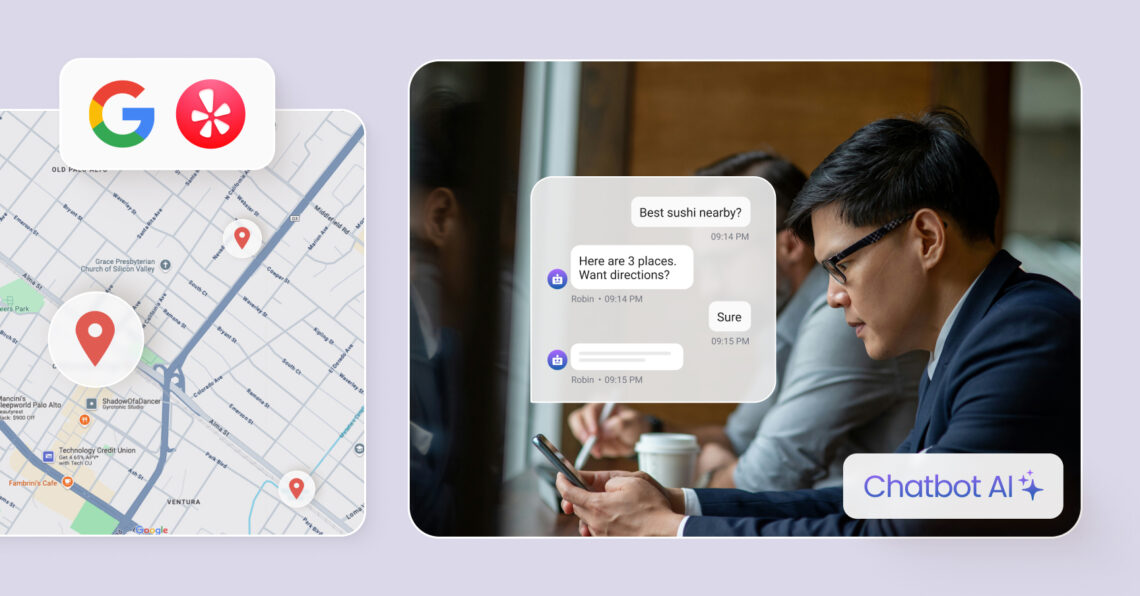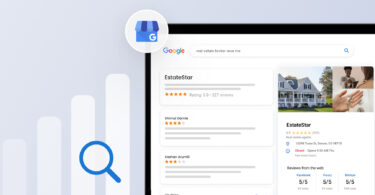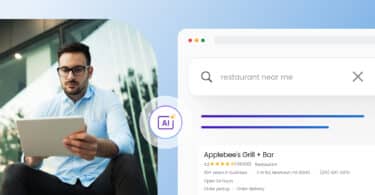The way people discover local businesses is shifting fast. Not long ago, a typical search for “best coffee shop near me” meant typing into Google and scrolling through a list of links. Today, AI assistants like ChatGPT and Google’s AI overviews let users ask conversational questions and get instant, synthesized answers.
In fact, between April 2024 and March 2025, the ten most-used AI chatbots saw 55.2 billion visits – an 80.92% year-over-year jump. This growing shift from traditional search engines to AI assistants has raised an urgent question for multi-location businesses: Are AI assistants pulling customers away from platforms like Google Maps and Yelp? Or are they simply adding a new layer to how people search? The real concern for businesses is whether these AI tools are transforming local discovery or just changing the interface.
Early signs point to AI assistants reshaping local search behavior but not replacing traditional search just yet. These tools offer quick answers and smart recommendations in a single chat interface, reducing the need to browse multiple sites. However, they currently draw from limited local data and tend to complement, rather than compete with, platforms like Google Maps or Yelp.
In short, AI chatbots are raising the bar for convenience, but core platforms for local discovery still dominate. For business leaders, the takeaway is clear: we’re entering a hybrid era. It’s a smart move to prepare for AI-driven local search, but staying visible on Google, Yelp, and other traditional platforms remains non-negotiable.
The rise of AI assistants in search
In under a year, generative AI has moved from experimentation to everyday use. Chatbots like ChatGPT now handle hundreds of millions of queries daily, and Google has injected AI-generated summaries directly into search results. What began as a novelty has become a real search behavior: users now ask natural-language questions and expect fast, conversational answers, often without scrolling through traditional results.
Here’s what we’re seeing so far:
- Usage momentum: Chatbots now handle roughly 3% of all search-related traffic. It’s a small slice, but growing quickly.
- AI Overviews go mainstream: Google’s AI summaries appeared in 13.14 % of all queries in March 2025, up from 6.49% in January.
- Local intent emerges: If you ask ChatGPT or Gemini for the “best dentist in Oklahoma City,” they’ll give you a shortlist of options, all in an easy-to-converse manner. The list is small, but these tools can now determine details like location, business hours, and customer ratings.
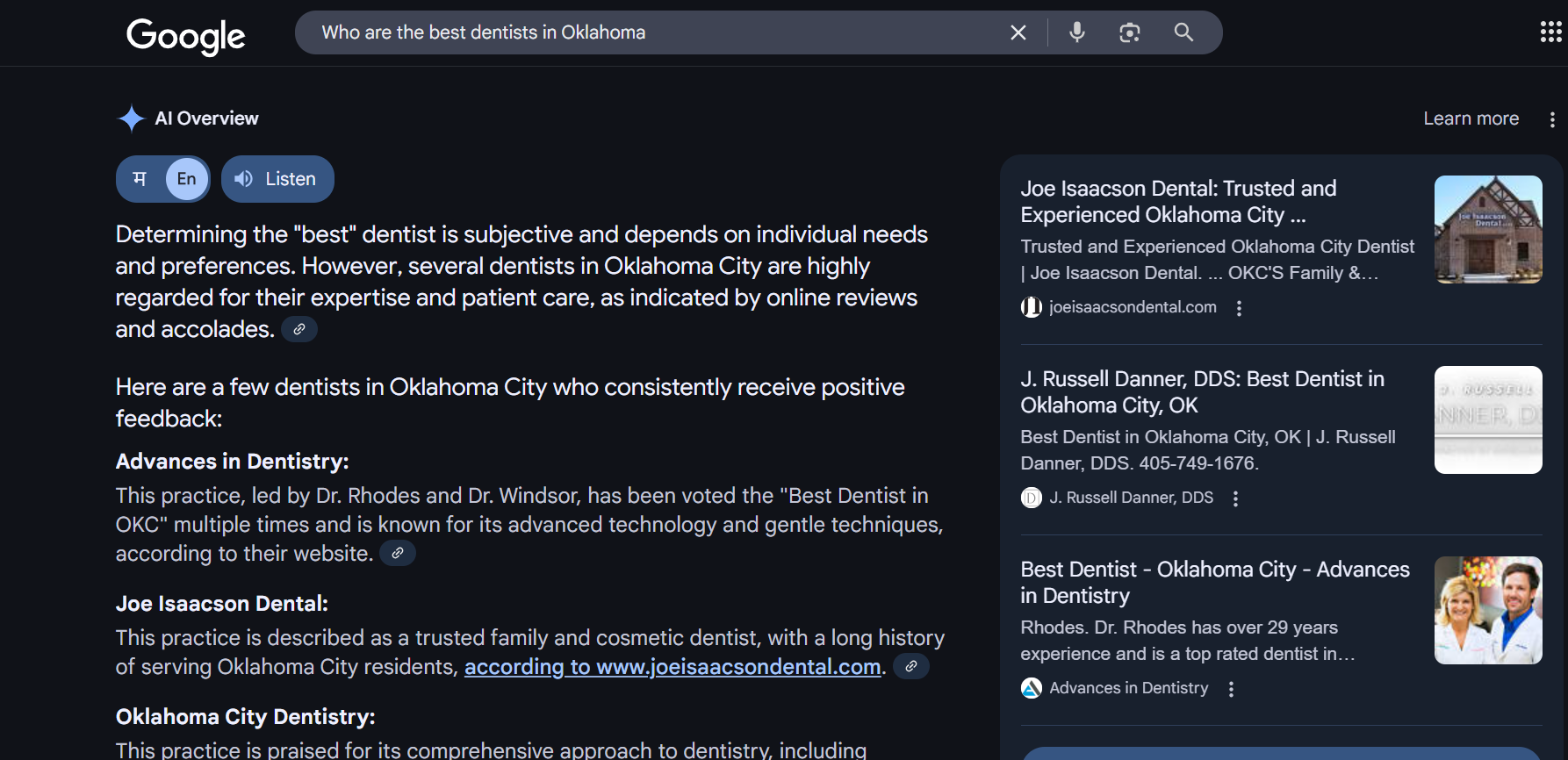

- AI Mode launches at scale: Google’s AI Mode went live to all U.S. users in May 2025 and is slated for global rollout by year-end, making AI local search potentially the default search experience.
- Early takeaway: AI assistants work faster but still need data from sites like Google Business Profiles, Apple Maps, Yelp, and other popular directories.
These signals suggest that AI assistants are becoming the very first touchpoint of the customer journey. The big question now is whether traditional platforms can stay on top or if the ease of AI will change people’s habits.
Traditional platforms still dominate local search
Even with all the buzz around AI, most people still rely on the same platforms they’ve trusted for years. Search engines like Google and directories like Yelp continue to offer the reach, reliability, and up-to-date information that AI assistants haven’t fully caught up with.
Here’s why traditional platforms still lead:
- Traffic scale: The ten largest search engines saw 1.86 trillion visits in the last 12 months, a dip of only 0.51% year over year.
- Google’s dominance: Google owns 89.62% of global search traffic, leaving only minor portions for its competitors combined.
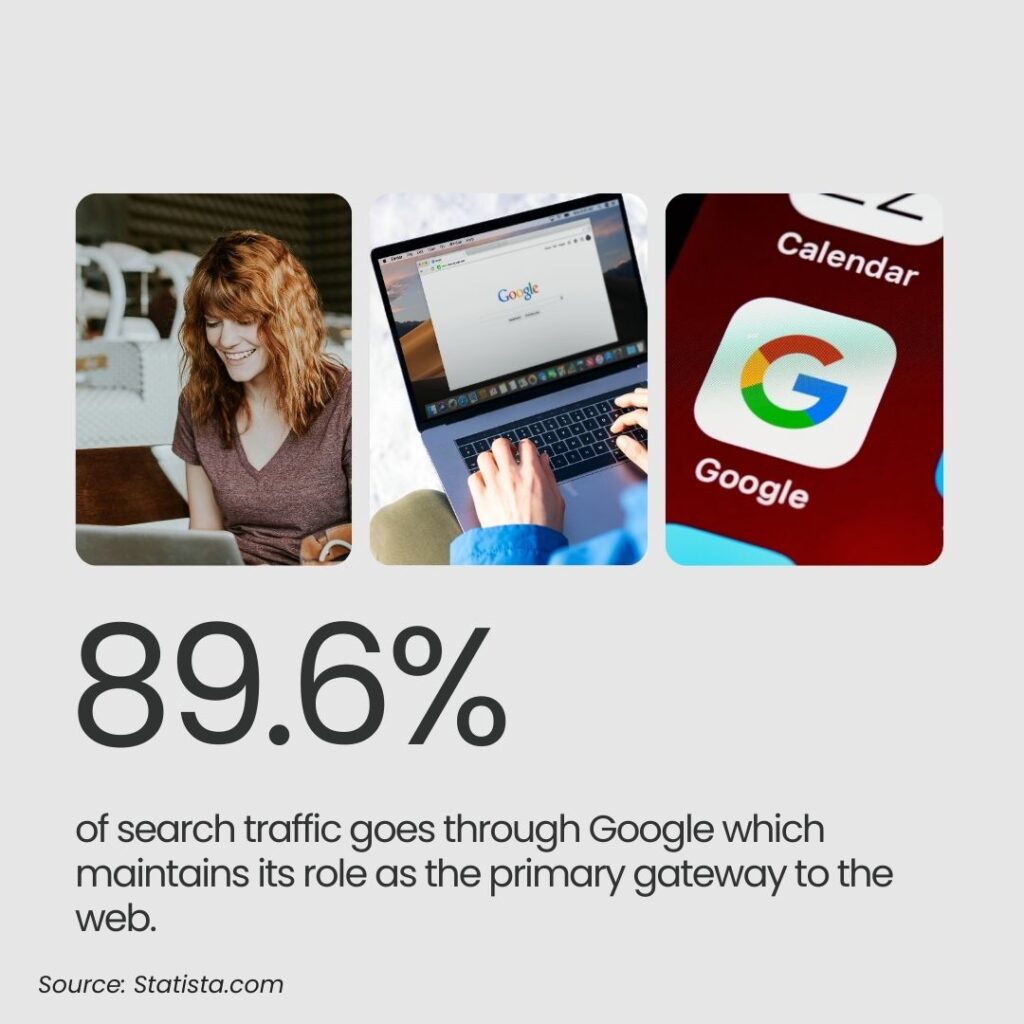
- User habits: In the US, 8 in 10 people search for a local business online at least once a week. When Google Map Pack appears, 42% of users click on it, indicating that it remains one of the most valuable platforms for local business visibility.
- Review gravity: Consumers still rely on reviews to make informed purchasing decisions and will often seek reviews outside of Google. For instance, Yelp attracts about 178 million unique visitors monthly and hosts over 265 million reviews. This highlights how photos, menus, and real-time hours shape decisions well before customers make a purchase.
Brands that double down on high-impact platforms often see better results. For example, when Cunningham Restaurant Group dropped 60 low-value directories and focused only on Google and Apple Maps, their web traffic went up 1048% in just one month. A big part of the success came from centralizing core data, using Birdeye Listings AI, which ensured optimized content was published to maps, voice assistants, and AI local search tools.
In short, having precise information on a select few dominant platforms is more effective than being everywhere with incorrect or mixed results.
Limitations of AI assistants in local search
When it comes to local business information, AI assistants still fall short. Even the most advanced chatbots often can’t give complete, up-to-date results for nearby businesses. Without real-time updates, rich visuals, or strong fact-checking, their answers may sound polished but don’t match the accuracy of a map or a listing.
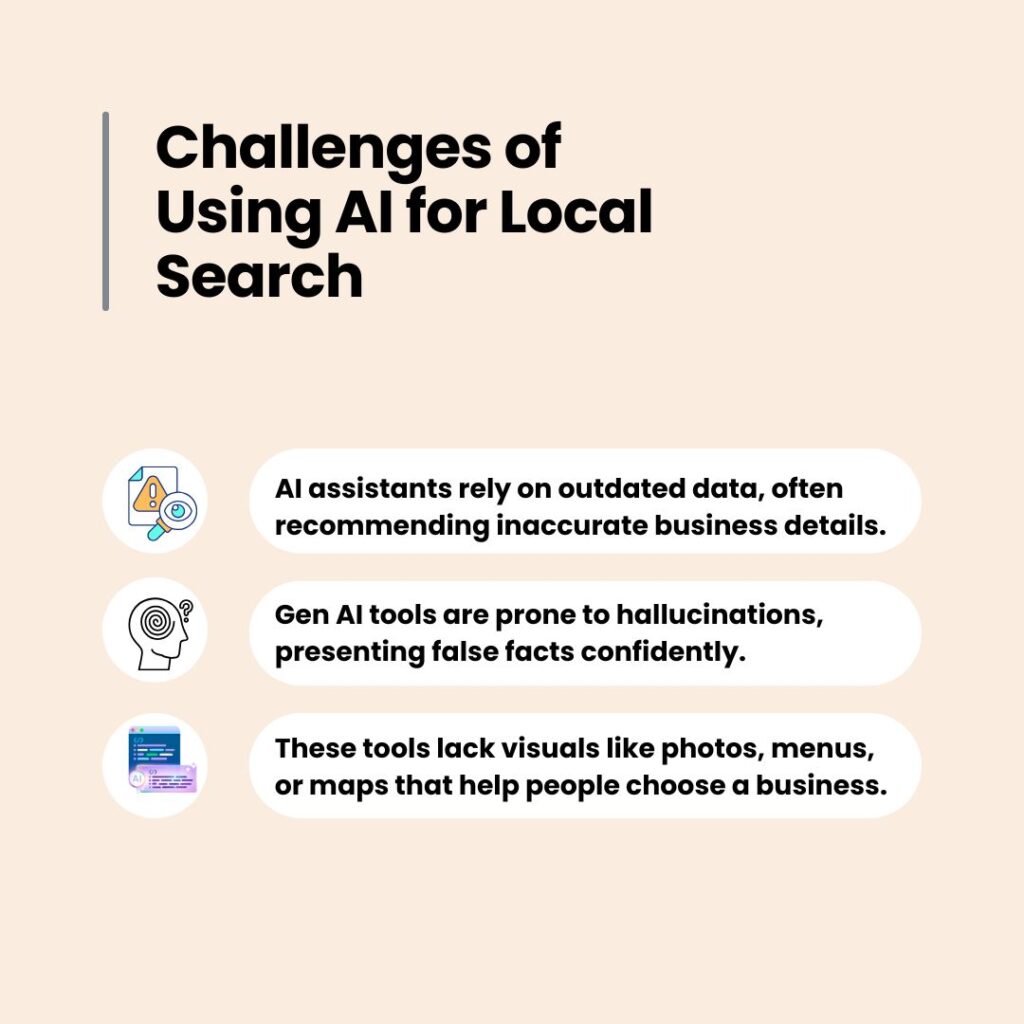
Data gaps
AI tools like ChatGPT don’t have real-time access to Google Business Profiles or live maps. Instead, they rely on older web content that might be weeks or even months old. The result: the AI might recommend a business that used to fit the criteria but no longer does.
Real-world test: in Chicago, Google AI Mode’s “sushi near me” restaurant choices averaged 4.9 miles away, compared with just 0.3 miles in Google Maps, and even suggested a ramen shop with no sushi on the menu.
Visual limitations
AI is great at writing summaries, but it can’t (yet) replicate the experience of browsing a visually rich business listing. There are no photos, 360° views, menus, or other visual cues that people look at before deciding where to go. In fact, studies show that tools like ChatGPT still don’t surface the kind of visual content you’d find on a Google Business listing, limiting the picture it can offer. The layout also duplicates those Yelp-sourced picks in a second carousel, wasting SERP space and confusing users.
Trust & hallucinations
One of the biggest concerns with AI is accuracy. Generative AI tools are prone to “hallucinations”, confidently presenting flat-out wrong information. In local search, this could mean recommending a business that doesn’t exist, listing an incorrect phone number, or falsely claiming a restaurant has a Michelin star.
Even Google has acknowledged that AI-generated responses can sound helpful but be completely made-up. Sometimes, AI mixes bits of content from different sources, like reviews or articles, and creates a misleading summary. Analysts have described it as a “tail-eating” effect, where AI repurposes misinformation from other AI outputs, making the same mistake proliferate. For users and businesses alike, this introduces a major trust issue.
So, the bottom line is: AI assistants may help guide users through the early stages of local search, but they haven’t replaced the richer, trusted experience users get from maps and listings.
Predictions for the next five years
In the next five years, AI assistants will be far more integrated with local data sources, show up in more search platforms, and may even handle tasks like scheduling appointments or making bookings. Here’s what to expect and what multi-location businesses should start preparing for to future-proof themselves:
What to watch:
- Deeper data integrations: Expect licensing deals that feed assistants real-time Google, Yelp, and vertical-directory data, closing today’s accuracy gaps.
- The rise of generative SEO: Schema-rich sites and clean feeds will become prerequisites for being cited in an AI answer.
- Local ad formats 2.0: Google is testing AI-generated sponsored slots inside AI Mode; budget planning will need to account for paid visibility in AI local search.
- Conversational search will become the norm: Voice and chat queries will trigger follow-up questions and bookings inside the assistant itself.
- Blended SERPs: Expect search results to unify. AI summaries, map packs, and organic links will appear in a single, scrollable view.
- Trust badges: Verified sources and user-feedback loops will surface to counter “hallucination” risks and build credibility.
AI isn’t replacing Google Maps or Yelp anytime soon, but it is raising the bar for what users expect. To stay visible, businesses must treat data accuracy, structured content (like schema), and conversational content as key elements of their growth strategy.
Actionable steps to make your business AI-ready
AI assistants are adding a powerful new layer to local search. I recommend using the following checklist to future-proof your business and ensure your locations show up accurately, whether customers are searching through Google Maps or asking an AI assistant:
1. Maintain accurate listings
Audit your business details monthly on high-visibility platforms like Google, Apple Maps, Bing, Yelp, Facebook, and key vertical sites. Correctly update your name, address, phone number (NAP), hours, and categories. Tools like Birdeye Listings AI make it easy to push updates across all platforms with a single click.

2. Implement schema
Add schema markup such as LocalBusiness, Review, and FAQ to your website. This will help AI models understand your content clearly and cite it accurately in search results.
3. Generate and manage reviews across platforms
Automate review requests via SMS or email after each transaction, reply to every comment within 24 hours, and track ratings weekly. Aim to keep your average review score on Google and Yelp at or above your top competitor. Reviews influence both consumer trust and AI rankings.
4. Broaden your presence on key verticals and social channels
Identify the 3-4 vertical directories (e.g., TripAdvisor for hospitality, Angi for home services) and the two social platforms where your audience actually searches. Claim the profiles, align NAP and hours, and post location-specific content monthly. AI assistants often scrape these sources for authority signals.
5. Create conversational content
Turn your top customer questions into FAQ schema and short Q&A blog posts. For example: “Do you offer gluten-free pizza?” or “How much is a same-day oil change?” AI assistants pull verbatim answers from well-formatted content like this, increasing your chances of being featured in snippets and voice results.
6. Audit AI visibility regularly
Ask ChatGPT, Gemini, and Bing Chat about your category and brand, such as “best [your service] near me” and other brand queries. Note inaccuracies, then correct source data or submit feedback. Tools such as Birdeye’s unified dashboard can flag inconsistencies before they propagate across multiple websites and directories.

Apply these six steps, and your business will be ready for both traditional search and the emerging AI-driven search experience—no matter how or where customers choose to look for you.
Wrapping up
AI assistants are changing how people search locally, but they aren’t replacing the fundamentals. These tools still rely heavily on trusted sources like Google Maps, Yelp, and Apple Maps. That means accurate listings, consistent data, and strong reviews remain as critical as ever.
To stay visible, ensure your business information is up-to-date across platforms, your website includes structured data, and your content answers real customer questions in a conversational tone. These small steps not only improve your current visibility but also position your business to be easily found in AI-powered search experiences.
For multi-location brands, the real opportunity lies in striking the right balance between traditional search and emerging AI tools. Platforms like Birdeye can help centralize updates and keep everything in sync, but the main goal remains the same: making sure your customers always find clear, trustworthy information, no matter where they search.
Originally published
